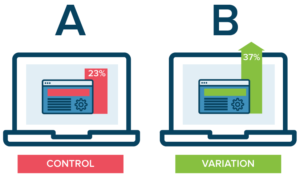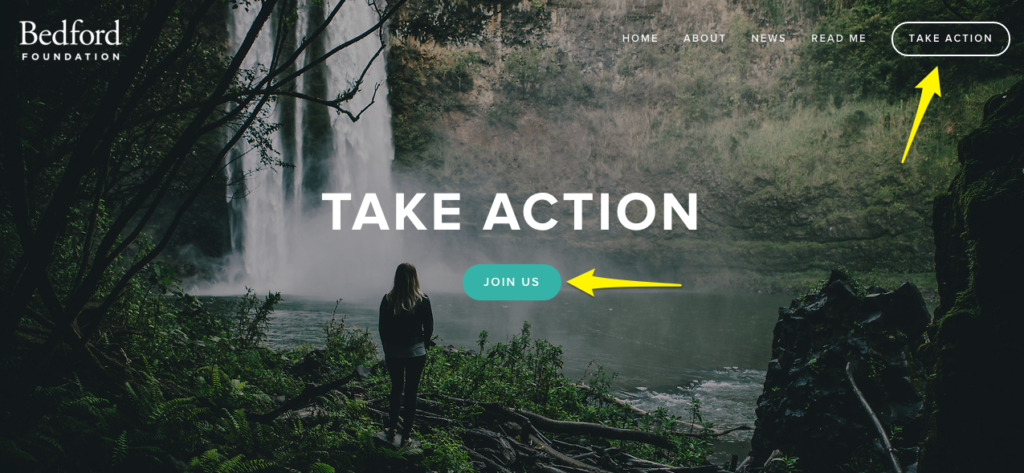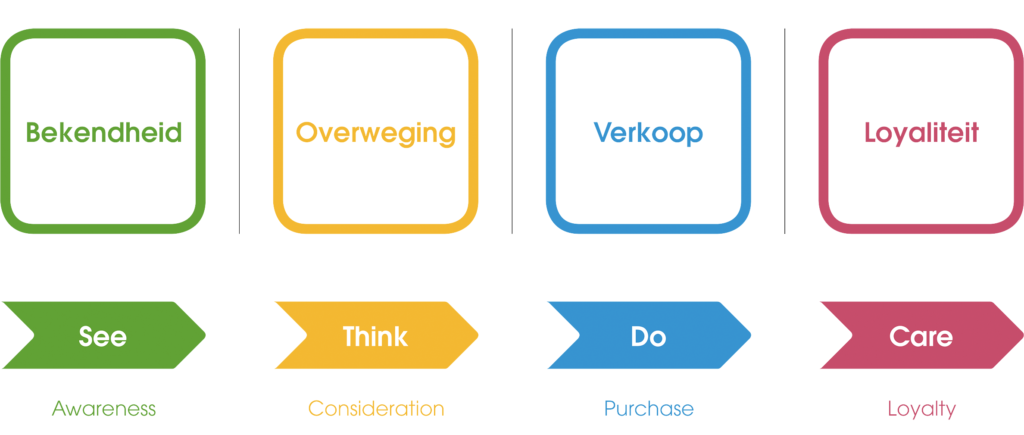The world of online marketing evolves so incredibly fast, and consumers change with it. Conversion optimization is therefore not something one-off, but something you have to keep doing continuously. Within B2C they have more experience with this than within B2B. We share the 2 conversion optimization challenges B2B organizations have and the solutions.
Unlike B2C websites, a B2B website has much less traffic. If people do not know of the existence of your website or business, you will have little to no traffic to your website. Therefore, it is important that your website has a good organic ranking in online search engines, such as Google. Make sure your website's SEO is set up properly so that your website comes up when people search for your business. Advertising can also help build more brand awareness.
Conversion optimization is challenging with low traffic. With only a few hundred website visitors per week, A/B testing of small changes doesn't make much sense. Additionally, you need data to discover where your website's areas of improvement lie, again this is difficult with low traffic because you need a longer time frame.
Still, low traffic is no reason not to accurately measure and optimize the website:
- Test big differences
Small changes have little effect if you don't have that many Web site visitors, but you can A/B test with big differences and multiple variants. For example, consider a header or a different workflow.

- Check the website for friction points
With low traffic, it will sometimes take longer until you have collected enough data to make a relevant statement. Still, if you dig deeper you will come to important information, but you can also optimize your website if you regularly go through the customer journey yourself for friction points (both desktop, and mobile).
- Check technical errors, such as broken links or forms that don't work;
- Provide a short, clear customer journey. Walk through this as a "new customer," sometimes it is better to have this done by someone who has never been on the website before;
- Adjust inconsistent messages and illogical buttons and/or promotions to avoid confusing the visitor.
- Provide clear call to actions: if you want the visitor to take action, place a clear button that tells the visitor what to click and what to click on.

A B2B purchase often has a longer trajectory than B2C. After all, it is not always about a physical product, but often about a service. The frequency and number of purchases is much lower than with B2C. The advantage is, however, that the purchase within B2B is often of higher value than a B2C purchase.
Also, there are often several people involved in a B2B purchase, making the process more complex. When a marketer within a B2B organization wants to purchase marketing automation software, they will need to discuss it and probably get permission from the manager or director who makes the decision. Those different stakeholders all have different customer journeys that they go through.
So how you motivate someone to buy depends on the persona and what stage of the customer journey he or she is in. When you map out which personas you are dealing with in your buying process, you can respond accordingly within the customer journey.
In general, the customer journey consists of four stages: Google's see, think, do and care model.

For a B2B organization, a customer journey usually looks more extensive. Therefore, make sure you first define the customer journey for your organization first.
Then you can map out what questions the personas might have for each phase. After all, if there are multiple personas in the buying process, one may be in the think phase and another in the do phase, for example. Each persona focuses on a different part. One persona focuses on functionalities and the other on price. You then work this out for each persona so that you get a clear customer journey of each persona.
You can now check the website to see if the necessary and correct information can be found for each persona. It is important that every visitor is motivated to buy at all stages of the customer journey.
In short, the conversion optimization process in B2B boils down to this:
- Map out the personas within your buying process;
- Work out a clear customer journey for each persona;
- Check the website for friction points (for each persona in your target audience) and adjust if necessary;
- Make sure you measure important points on your website: set goals for forms, do A/B testing, make button clicks visible so you can measure the behavior of website visitors;
- Look at scrollmaps to find out where most visitors scroll to and make sure the most important information falls within these;
- Ask your visitors for feedback, for example in a short survey.
[su-columns][su-column width="48%"]

[/su-column][su-column width="48%"]
Need help optimizing your website?
Get in touch with us!
[su-button url="https://www.searchuser.nl/contact/" type="1"]Contact[/su-button]
Then read how we optimize conversion for our clients here
[su-button url="https://www.searchuser.nl/diensten/conversie-optimalisatie/" type="1"]Our Way of Working[/su-button]
[/su-column][/su-columns]
